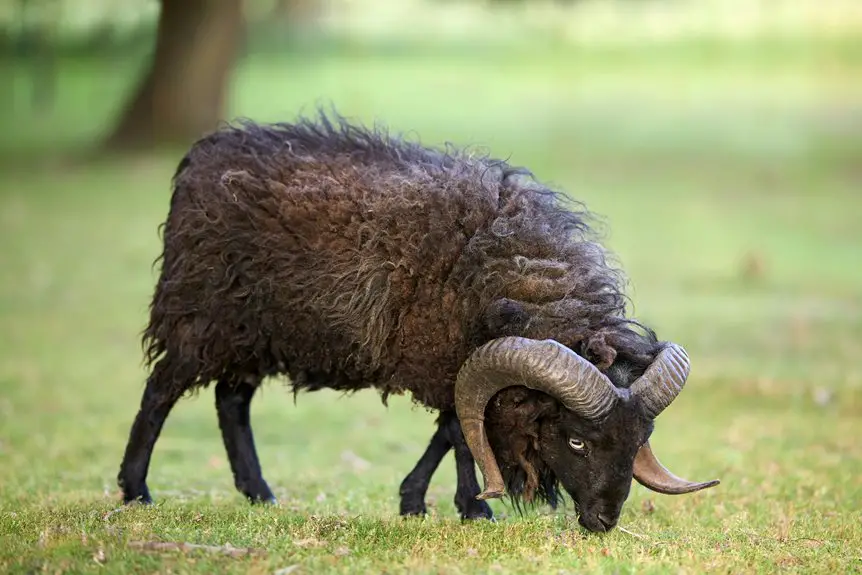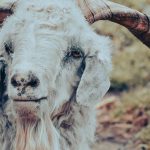You might wonder if angora wool is ethical. The truth is, it often involves serious animal welfare issues—like live plucking, which causes pain and stress for rabbits. Some brands use cruelty-free methods like shearing and transparent sourcing, but many don’t. If you care about animal wellbeing, you’ll want to explore how these fibers are gathered and what cruelty-free alternatives exist to make kinder fashion choices.
Table of Contents
Key Takeaways
- Angora wool harvesting often involves live plucking, causing pain and stress, raising significant animal welfare concerns.
- Shearing is a less harmful method but requires skill to avoid injuring angora rabbits.
- Ethical brands use cruelty-free sourcing, transparent supply chains, and third-party audits to ensure rabbit welfare.
- Many angora farms still face criticism for cramped conditions and handling practices causing emotional and physical distress.
- Cruelty-free alternatives like alpaca wool, organic cotton, and recycled fibers offer ethical fashion options without animal harm.
Understanding Angora Wool and Its Sources
Although you might already be familiar with angora wool, understanding its origins is key to grasping its ethical implications. Angora wool comes from the angora rabbit, known for its incredibly soft and silky fibers.
These rabbits are different from other wool-producing animals like sheep, as their fur grows continuously and requires regular harvesting. You’ll find angora wool prized for its warmth and lightweight feel, often used in luxury clothing and accessories.
However, knowing where and how this wool is sourced helps you consider the welfare of the animals involved. The conditions under which angora rabbits are raised vary widely, making it essential to look beyond the product itself and understand the source to make an informed, ethical choice.
Common Methods of Angora Wool Harvesting
When you look into how angora wool is harvested, you’ll find that producers mainly use three methods: shearing, plucking, and combing.
Shearing involves cutting the wool off the angora rabbits, usually every three to four months. It’s quick and yields large amounts of fiber.
Plucking, on the other hand, is a slower process where loose, naturally shed fibers are gently pulled from the rabbit’s coat. This method produces softer, higher-quality wool but requires patience and care.
Combing is similar to plucking but uses a fine-toothed comb to extract the fibers, often gathering the soft undercoat while leaving the topcoat intact.
Each method affects the wool’s texture and quantity differently, and understanding these techniques helps you grasp how angora wool reaches your garments.
Animal Welfare Concerns in Angora Production
Since you’re interested in angora wool, it’s important to contemplate the animal welfare concerns tied to its production.
Angora rabbits are delicate creatures, and mishandling during wool harvesting can cause them significant stress and pain. Practices like live plucking often lead to injuries, skin tears, and anxiety.
Even shearing, though considered less harmful, requires skill to avoid hurting the animals. In some cases, rabbits endure cramped living conditions and poor care, which affect their overall well-being.
The emotional toll on these sensitive animals is often overlooked, yet it’s a critical factor when evaluating angora’s ethics. As you weigh your choices, recognizing these welfare issues helps you make informed decisions about supporting cruelty-free alternatives or demanding better standards in angora production.
How Brands Ensure Ethical Angora Practices
Recognizing the animal welfare issues in angora production, many brands have stepped up to adopt ethical practices that protect the rabbits. You’ll find that these companies prioritize cruelty-free sourcing, transparent supply chains, and regular third-party audits. When you choose ethically sourced angora, you support farms where rabbits are never plucked forcibly and live in humane conditions.
| Ethical Practice | What It Means | Why It Matters |
|---|---|---|
| Cruelty-Free Sourcing | Rabbits are gently combed only | Prevents pain and stress |
| Transparent Supply | Brands disclose farm origins | Builds consumer trust |
| Third-Party Audits | Independent welfare checks | Guarantees compliance with standards |
Alternatives to Angora Wool for Cruelty-Free Fashion
If you want to enjoy soft, warm fabrics without compromising your values, several cruelty-free alternatives to angora wool are available. You can opt for plant-based fibers like organic cotton, bamboo, or hemp, which offer breathability and comfort without animal involvement.
For a wool-like feel, materials such as recycled polyester fleece or Tencel provide warmth and softness sustainably. Alpaca wool is another option; it’s ethically sourced and less likely to involve animal harm when certified.
Additionally, innovative fabrics like Piñatex, made from pineapple leaves, give you texture and durability while supporting eco-friendly practices. By choosing these alternatives, you support cruelty-free fashion without sacrificing quality or style. You can look great and feel good about your wardrobe choices simultaneously.
Frequently Asked Questions
How Does Angora Wool Compare to Other Wools in Warmth?
You’ll find angora wool warmer than most other wools because its fibers trap more air, providing superior insulation. It’s softer and lighter, making it perfect for cozy, warm clothing without feeling bulky or heavy.
What Countries Are the Largest Producers of Angora Wool?
Ever wondered where your soft Angora comes from? You’ll find the largest producers in China and France, with China leading hugely. These countries raise Angora rabbits to harvest that luxurious, silky fiber you love.
Can Angora Wool Cause Allergies or Skin Irritation?
Yes, angora wool can cause allergies or skin irritation because it’s made from rabbit fibers, which might irritate sensitive skin. If you’re prone to allergies, you should test a small patch before wearing angora garments.
How Should Angora Garments Be Properly Cared For?
You should hand wash angora garments in cold water with gentle detergent, avoid wringing, and lay them flat to dry. Store them away from direct sunlight and moths to keep the fibers soft and intact.
Is Angora Wool Biodegradable and Environmentally Friendly?
Yes, angora wool’s naturally nurturing nature makes it biodegradable and environmentally friendly. When you wear and wash it wisely, you’ll witness how this wondrous wool wonderfully weaves warmth without waste or harmful impact.
- Does Chiffon Fabric Stink - July 15, 2025
- Does Chiffon Fabric Affect the Economy - July 15, 2025
- Does Cotton Fabric Have a Nap - July 15, 2025







